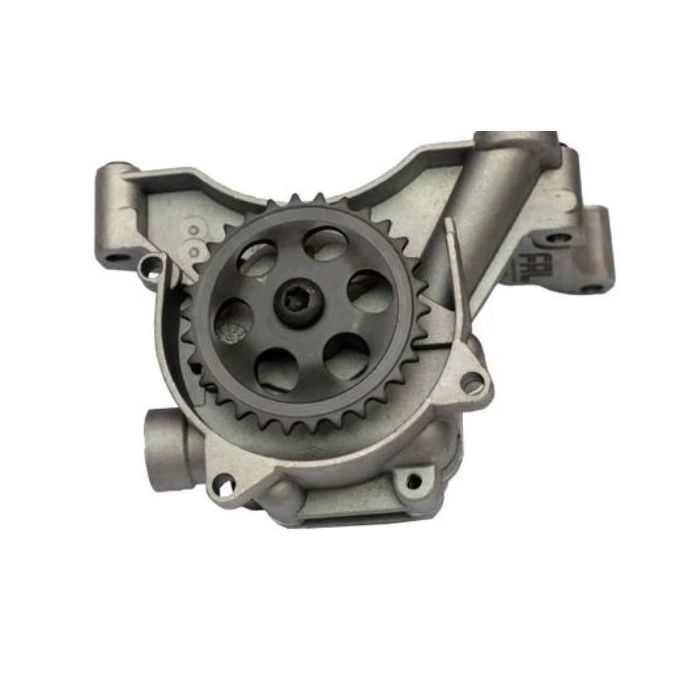Increase fuel efficiency with a top-tier clp engine.
Just How a Clp Engine Can Enhance Efficiency in Various Industries
The advent of CLP engines notes a considerable change in operational effectiveness across various markets, driven by their capability to enhance gas consumption and reduce downtime. Industries such as production and logistics stand to acquire significantly from their robust design and regular power output, which guarantee to streamline procedures and boost performance. As organizations significantly prioritize sustainability together with efficiency, the function of CLP engines comes to be a lot more important. What remains to be seen is how these innovations will shape the future landscape of industrial procedures and their effect on wider economic patterns (clp engine).
Summary of CLP Engines
CLP engines, or Continuous Fluid Propellant engines, stand for a significant development in propulsion technology, specifically for room applications. These engines use a constant feed system that permits for the sustained expulsion of propellant, resulting in boosted effectiveness and performance compared to standard solid or hybrid propulsion systems. By preserving a consistent circulation of fluid propellant, CLP engines can achieve much more specific drive control, which is critical for maneuvering spacecraft in numerous goal scenarios.
The layout of CLP engines integrates sophisticated materials and ingenious gas monitoring systems. clp engine. This results in reduced weight and raised integrity, essential aspects for long-duration space missions. The continuous procedure decreases the risk of combustion instability, a typical difficulty in standard rocket engines.

Benefits in Manufacturing
The production of Constant Liquid Propellant (CLP) engines provides numerous significant advantages that boost both efficiency and cost-effectiveness. Among the primary benefits is the structured production procedure, which lowers the intricacy connected with typical propulsion systems. By using liquid propellant, producers can attain higher precision in engine performance, bring about maximized energy output and minimized waste.
In addition, CLP engines help with a higher level of modularity, permitting for much easier combination into different manufacturing lines. This adaptability can substantially reduce preparations and enhance total operational adaptability. Using CLP modern technology also tends to decrease the need for substantial maintenance as a result of less moving components, which equates right into decreased downtime and operational costs.

Applications in Logistics
Leveraging Constant Liquid Propellant visit this page (CLP) engines in logistics uses considerable advantages in operational performance and reliability. These engines provide a durable option for different transport needs, enabling the smooth movement of items throughout large ranges. The intrinsic design of CLP engines enables constant power output, which translates right into smoother and much more foreseeable transport schedules.
Among the vital applications of CLP engines in logistics is in durable freight transportation, where they can drive both ground and airborne automobiles. Their capacity to keep high efficiency under differing load conditions makes sure that delivery timelines are met, thus enhancing customer fulfillment. Furthermore, CLP engines can be incorporated into automated logistics systems, helping with real-time from this source tracking and maximizing path preparation.
Additionally, the durability of CLP engines minimizes upkeep downtime, allowing logistics companies to optimize their operational abilities. This is particularly useful in warehousing procedures, where performance in managing and carrying goods is critical. As logistics remains to advance, the integration of CLP engines represents a forward-thinking technique that not just improves efficiency however additionally sustains the sector's expanding needs for dependability and rate.
Effect On Energy Performance
Just How do Constant Liquid Propellant (CLP) engines enhance energy performance in transportation? CLP engines make use of a constant circulation of fluid gas, optimizing combustion processes and keeping a steady thrust output. This design minimizes energy losses connected with traditional burning engines, where fuel shipment can vary and lead to ineffectiveness.
The constant procedure of CLP engines enables for an extra reliable thermal cycle, resulting in higher particular impulse compared to conventional engines. clp engine. This converts to lowered gas usage for the exact same amount of work done, substantially decreasing operational prices across different transport markets, consisting of aeronautics and maritime sectors
In addition, the capacity of CLP engines to maintain ideal performance under varying tons problems minimizes the demand for constant velocity and slowdown, better boosting gas effectiveness. Boosted energy effectiveness not just adds to cost savings but also causes reduce greenhouse gas discharges, lining up with international sustainability objectives.
Future Trends and Innovations
Emerging advancements in Constant Liquid Propellant (CLP) engine technology pledge to revolutionize the landscape of transportation effectiveness and sustainability. As sectors pivot towards greener options, CLP engines stand at the leading edge, incorporating ingenious products and style approaches that boost performance while minimizing environmental influence.
One of the most encouraging trends is Read More Here the adoption of hybrid systems that combine CLP engines with eco-friendly power sources. This synergy can maximize gas consumption and minimize emissions, straightening with international sustainability objectives. Additionally, developments in computational fluid characteristics (CFD) are assisting in the style of more aerodynamically efficient engines, causing minimized drag and improved gas effectiveness.
Furthermore, the growth of smart monitoring systems is readied to enhance functional performances. These systems utilize data analytics and IoT innovation to enhance engine efficiency in real-time, making certain that the engines operate within their most reliable parameters.
As research proceeds to discover alternative propellant formulations-- such as biofuels and artificial fuels-- the future of CLP engines looks appealing. By utilizing these developments, markets can not just enhance their efficiency yet likewise contribute dramatically to a cleaner, more lasting future in transportation.
Conclusion
In verdict, CLP engines represent a significant advancement in effectiveness across multiple sectors. The integration of innovative materials and less relocating components decreases upkeep requirements, while positioning with sustainability objectives settings CLP engines as a critical innovation for the future.